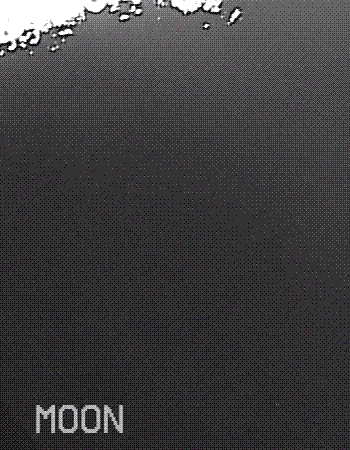A meteoroid struck the Moon in early November, and NASA scientists caught the impact on tape.
NASA scientists at the Meteoroid Environment Office at the Marshall Space Flight Center in Huntsville, Alabama, set up a telescope outside their office building to monitor flashes on the Moon’s shadowed side.
Rob Suggs, team leader of NASA’s space environments team, and Wesley Swift, a contractor who supports the environments team, connected an Astrovid StellaCam EX to an Orion 10-inch f/4.7 Newtonian on an Atlas mount as a 1-night project. The two were testing the feasibility of the monitoring technique. Video cable ran from the setup outside the engineering building to a desktop computer inside. According to Bill Cooke, an astronomer at the Marshall Space Flight Center, the video sat on the computer for a week before Suggs analyzed it and found the 7.3-magnitude flash.
Cooke and his colleagues estimate the softball-size meteorite weighed about 8.4 pounds (3.8 kilograms). Because the team members believe the impactor came from the Taurid meteor shower, they estimate it hit the lunar surface at about 60,000 mph. When you combine the impactor’s mass and velocity, you get a striking power of about 640 pounds of TNT — roughly equal to the yield of conventional bombs carried by modern jet bombers. Such a meteoroid’s impact would result in a crater about 10 feet wide.
According to Cooke, Earth-based observers can see about one or two such impacts per month through their telescopes. “Meteor showers produce additional visible impacts,” Cooke told Astronomy, “but we don’t have a good handle on how many” take place. This uncertainty about when and how many lunar impacts occur led to the impromptu telescope-video setup November 7.
Learning the frequency of such impacts will be critical as NASA continues preparations for sending astronauts to the Moon. “You wouldn’t want to be an astronaut on extra-vehicular activity near where one of these hits,” Cooke said. “Your suit could be perforated by flying debris.”
Unfortunately, this fresh crater is too small for earthbound observers, as well as the Hubble Space Telescope, to see.
The impact occurred during the peak of the annual Taurid meteor shower. Debris from the Taurid meteor shower originates with Comet 2P/Encke during its 3.3-year journey around the Sun. The annual meteor shower typically peaks in late October and/or early November.










